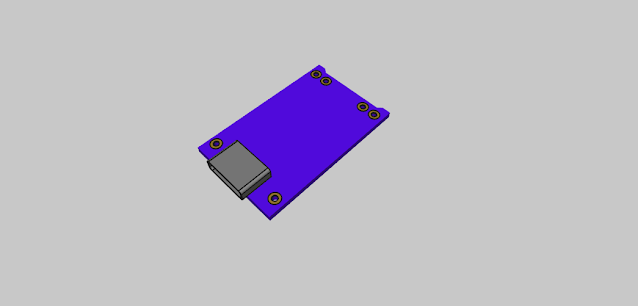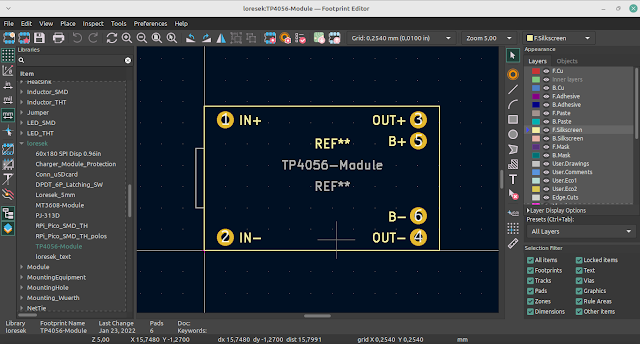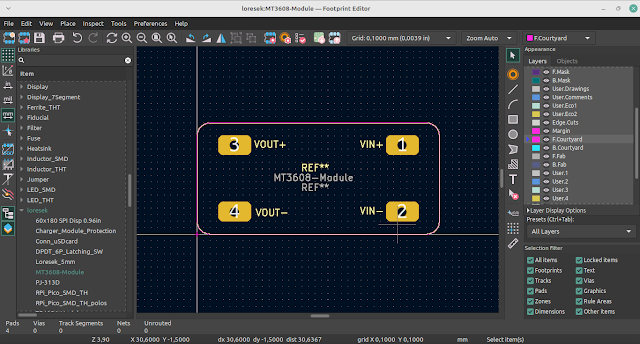Unveiling the Vectorscope KiCad Redrawing Project
Introduction
The Vectorscope KiCad Redrawing Project, hosted on GitHub by thestumbler, is a captivating endeavor that beckons electronics enthusiasts and KiCad aficionados to delve into the world of PCB design. This comprehensive review aims to shed light on the project's intricacies, accomplishments, and the opportunities it presents for collaboration and contribution.Project Overview
The Vectorscope KiCad Redrawing Project was born out of the author's determination to replicate the Supercon Vectorscope badge, a testament to the allure of open-source hardware. The project kicks off with a compelling narrative, outlining the challenges faced when attempting to build the badge remotely and the subsequent decision to redraft the KiCad schematics.
GitHub Repository Exploration
Navigating the GitHub repository (https://github.com/thestumbler/vectorscope-kicad) unveils a well-organized and documented project structure. The repository houses not only the KiCad PCB file but also crucial documentation, providing valuable insights into the design decisions, challenges, and solutions encountered during the redrawing process.The Journey of Redrawing
The review delves into the journey of redrawing the schematics, highlighting the author's resourcefulness in tackling unexpected hurdles. The conversion from Circuit Maker to KiCad, the discovery of a graphical lines-to-traces feature, and the meticulous process of rearranging the circuit's flow into a left-to-right direction are all explored in detail.Noteworthy Features
The project introduces notable features, such as the use of PCB schematics provided in image format, demonstrating good design practices. The review emphasizes the significance of the graphical lines-to-traces conversion feature, offering insights into its quirks and the author's adept handling of overlapping elements during the process.Challenges and Solutions
The author candidly discusses challenges encountered, including discrepancies between the original schematics and the PCB layout. Notably, issues with part footprints and net names on the original schematic are addressed. The review underscores the importance of this transparency, creating a collaborative atmosphere where potential contributors can understand the project's nuances.Contributor-Friendly Environment
A key focal point of the review is the call for collaboration. The GitHub repository serves as a welcoming space for contributors, providing a detailed README that outlines existing issues, discrepancies, and potential areas for improvement. The author's commitment to resolving the identified issues and the clear communication of project goals and challenges fosters an environment conducive to collaboration.Educational Value
Beyond its tangible outcomes, the Vectorscope KiCad Redrawing Project offers educational value. The review highlights the educational journey embedded in the project, from the intricacies of KiCad features to the thought process behind rearranging schematic flows. This educational aspect enhances the project's appeal, attracting both novices and experienced designers eager to expand their skill set.Conclusion and Call to Action
In conclusion, the Vectorscope KiCad Redrawing Project is a commendable initiative that showcases the resilience and creativity of its author. The review encapsulates the project's narrative, challenges, and achievements, emphasizing its potential as a collaborative endeavor.
The call to action encourages readers to download, explore, and contribute to the project on GitHub, fostering a community-driven spirit that propels open-source hardware innovation forward.
With its educational value and the promise of continuous improvement, the Vectorscope KiCad Redrawing Project beckons enthusiasts to join the journey of creative exploration and collective knowledge-building.











